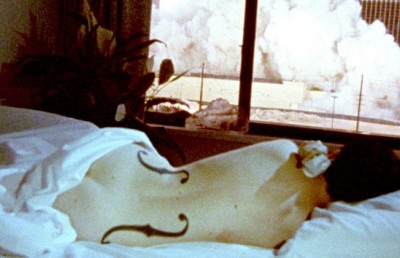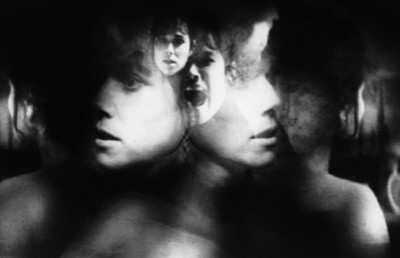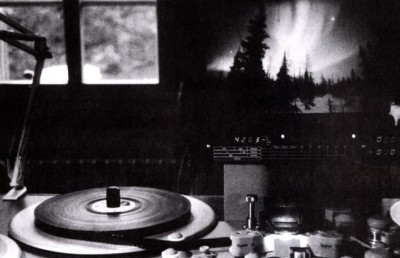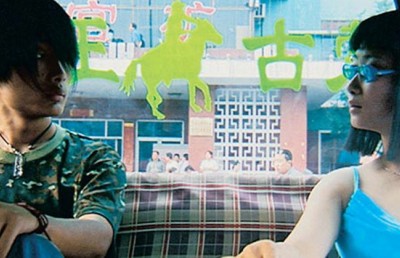FCMM 2002 Dossier : Fragmented Visions
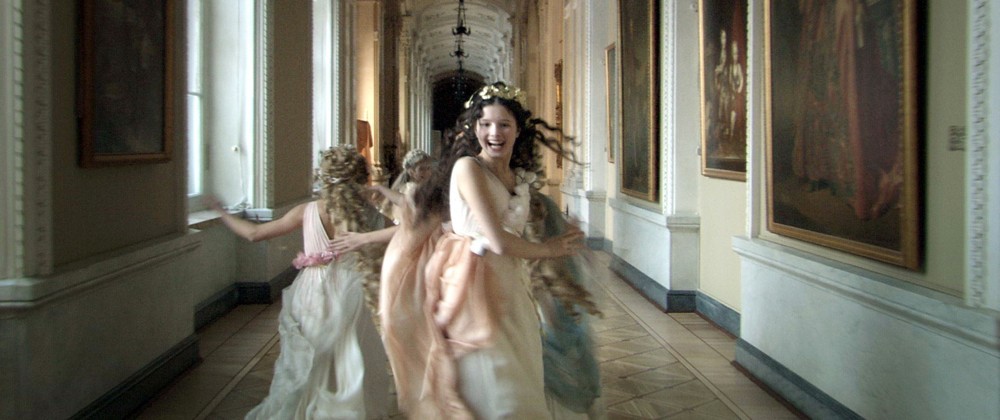
A recurring element that struck me during the 2002 Festival International Nouveau Cinéma Nouveaux Medias’ and which I have decided to use as my anchor for this report, is the fragmented narrative, and/or the anthology or omnibus format. Many films at the FCMM were structured using this time honored tradition of fragmenting a feature film into either sectioned but interlocked episodes or self-standing autonomous episodes. And with either one director helming the complete feature or several directors.
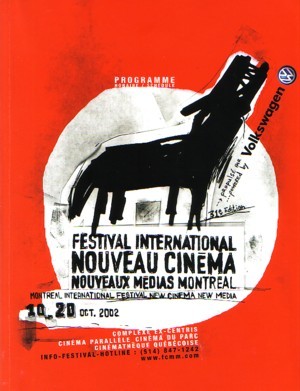
Gambling, God and LSD (Peter Mettler) was the festival’s most impressive fragmented narrative film. GGLSD opens with a flash of abstract images, sounds of an airport, and then cuts to a close-up of a river. A wonderfully smooth camera movement takes us along a montage of waterscape imagery, accompanied by liquid ambient music. The camera feels as if it is an astral body projection, not an inappropriate metaphor for a film which will, for its next three hours, take the viewer on a sensorial trek across four parts of the globe: Toronto, Monumental Valley/Nevada/Las Vegas, The Helvetian Glacis/Switzerland/Zurich, and the Vijayanagara Empire, Southern India. Although there are dozens of visual and thematic links that exist between the four different segments, the effect is one of accumulated wholeness. Or better yet, a myriad of different energy sources that are part of one singular energy source: the earth and the human spirit. In the opening segment we see members of a Christian revivalist meet (Members of the Toronto Airport Christian Fellowship Church) chanting, dancing, writhing and falling under the spell of the Holy Spirit’s energy. In the next Southwestern USA segment Mettler visits a land of industrial energy sources (electrical towers, a nuclear energy site, and a missile silo) and a simulacra city that exists on pure industrial energy: Las Vegas. In this, by far the most fascinating segment in the film, Mettler explores the power of the illusion, the fake behind the real (cinema?). He visits with a sexual guru who offers his clients a “non-chemical induced illusion of their fantasy.” The opening segment of the revivalists tapping into the Holy Spirit’s energy source had the feel of a Wilhelm Reich therapy. The spirit of Reich is also felt in the second segment in the guru’s answer to Reich’s Orgone box, the “erotic electro-stimulation chair (or Auto-Erotic chair for short).” Think of the eating machine from Chaplin’s Modern Times, but for the genitals.
In the third segment the Helvetian Glacis provides nature as a pure energy source. Swiss scientist Albert Hofmann explains his world unity theory of ‘horizontal genetics’ and how humans are not really unique because there is a common genetic pattern shared by all living organism. A genetic version of Jung’s collective unconscious if you will. Mettler playfully expresses his theory with a fractal image splitting of young dancers at a bar (into a ‘rave Mandelbrot set’). In the final segment, the energy source returns back to the spectator, the gaze, or as Mettler tells us in voice-over, the act of “looking versus looking for something.” The lasting image in this segment is the physically deformed young South Indian man for whom Mettler’s camera functions like a magnet pulling him toward its lens. The young seeker becomes a surrogate for Mettler, who is also continually drawn to his subjects, and ‘looking.’ A by-product of these energy sources is humanity’s varied attempts at transcendence, implied of course in the film’s title (materialism, religion, drugs), but also through dreaming, physical stimulation, the act of flying, and mind power.
GGLSD is a modern variant of the wonderful, old tradition of the city film, Rien que les heures (Alberto Calvacanti, 1926), Berlin Symphony of a Great City (Walter Ruttmann, 1927), Man with a Movie Camera (Dziga Vertov, 1928), A Propos du Nice (Jean Vigo, 1929), Rain (Joris Ivens, 1929), and other modern equivalents Koyaanisqatsi (Godfrey Reggio, 1983), Powaqqatsi (Godfrey Reggio, 1988), and Baraka (Ron Fricke, 1992). Only here the scope is broader, a “multi-city film.” During a spirited question and answer period Mettler elaborated on his cinema influences, mentioning Andrei Tarkovsky (for his spiritualism, use of nature), Michelangelo Antonioni (for his use of architecture) and “experimental cinema.” In this latter regard, along with the aforementioned city films, is a film which I feel has many similarities to GGLSD, Peter Rose’s 1982 The Man Who Could Not See Far Enough. Mainly in its treatment of awe, scenes of people ‘watching’ (especially the scene in GGLSD of people grouping together to watch a hotel be demolished), and the metaphysical understanding of ‘seeing too far.’
In the same category of “multi-city film” as GGLSD but far less effective is the four hour long DV film Elsewhere by Nikolaus Geyrhalter. Geyrhalter’s scope is broader than Mettler’s, having travelled some 240,000 kilometers in 2000 and visiting 12 off-the-beaten track destinations (Niger, Finland, Micronesia, Australia, China, Greenland) and environments (icecaps, deserts, mountains, jungles, etc.). We spend 20 minutes in each of the 12 locations. Although there are some impressive images, the film lacks a sense of thematic unity beyond the obvious distance from industry and civilization. The result is that it only infrequently rises above the level of a glorified travelogue.
Even Kitashi Kitano’s poetic change of pace Dolls had a fragmented narrative structure in its three interlocked stories of ‘sad love.’ Taking its cue from a staged Bunraku puppet play, Kitano animates the play into reality by having his two central characters act out the puppet drama tragedy. A young man breaks off a relationship to the woman he loves because of family pressure to marry someone else, but then rescinds his decision after he finds out that his girlfriend attempted suicide and was institutionalized after the breakup. He takes her out of the hospital, binds himself to her with a red rope, and spends the majority of the film walking through the changing seasonal landscape. Structurally the film begins with the two already tied walking past a group of hawkers, and then cuts back and forth in time and between two other sets of lovelorn couples.
Abbas Kiarostami’s Ten is perhaps the most minimalist of the film’s featuring a taxonomical structure. Ten marks Kiarostami’s second major stab at digital cinema, and far surpasses his first attempt ABC Africa. It marks a change of pace for Kiarostami in many respects, the subject matter (focus on women, urban rather than rural milieu, less than angelic children), the near exclusive dependence on dialogue, and the singular location. But the film is quintessentially Iranian in one striking way: the importance of the automobile. The car is omnipotent in Iranian cinema. When thinking of Kiarostami just remember the dozens of shots following the driving man in search of someone willing to bury his body after he commits suicide in A Taste of Cherry, the opening long take from the front of the car in Through the Olive Trees, the many drives to the open range to get a clear signal for his cell phone in the The Wind Will Carry Us, or the final shot of the car struggling to negotiate the steep hill in And Life Goes On. Kiarostami goes one step further here, as the camera never leaves the front seat of the central character’s car (actress Mania Akbari), recalling the singular lifeboat location in Hitchcock’s Lifeboat. Whereas it merely served as a dramatic challenge for Hitchcock, here the car serves as a literalisation for the limited range of social mobility for Iranian women, or at least the Iranian women seen in this film. The film is segmented into ten separate conversations that the central character, a young divorcée, has in her car as she drives around Tehran. Her ill-tempered son –whose performance is a far cry from the usual Iranian representation of children as docile, tender and innocent- appears in four ‘encounters’ (segments 1, 3,5, and 10). Her sister (or sister-in-law) appears in segment 9, a close friend in segments 2, 4, and 6, and two contrasting strangers appear in segments 7 and 8, a prostitute who “likes her work” and shares work details with the more than curious driver/heroine, and an older, devout religious woman who tries (unsuccessfully) to convince the driver to join her in prayer at the mausoleum.
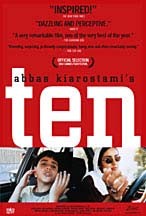
The film which owes the most to its fragmentary nature is 11’09”01, a compilation of eleven directorial reactions to the events of 9/11. The duration for each segment is also meant to reflect its structure, lasting no longer than 11 minutes and one second and based around one ‘image’. Given the range of directors, approaches, and the controversial subject, the film was destined to receive a rough n’ tumble reception. Which clearly has been the case. But the film, even with its expected inconsistencies in quality and style, remains an honest artistic response to a political event that has become, and continues to be, hugely important on the global scene. The decision to include as vast a national range as possible was clearly the best possible decision and in keeping with the event’s global consequences. The directors who contributed to 11’09”01 are, in chronological order of their segments: Samira Makhmalbaf, Claude Lelouch, Youseff Chahine, Danis Tanovic, Idrissa Ouedraogo, Ken Loach, Alejandro González Iñárritu, Amos Gitaï, Mina Nair, Sean Penn, and Sohei Imamura. Although each episode was unique, there were some overlapping concerns or approaches. For example, both Makhmalbaf and Ouedraogo’s stories used children to represent how, even in this global marketplace, there are pockets of societies or peoples who are isolated from the western/industrial world, and on whom the event of 9/11 had no effect. In Makhmalbaf’s tale a teacher has little luck trying to impress the gravity of the event on her schoolchildren. It ends with the teacher trying to make her point by taking the children out of class to look at the large chimney tower hovering over their school area (shot in an extreme low angle shot from below a bridge, with smoke billowing from the tower). In Ouedraogo’s piece, the only outright comedy of the ensemble, a group of poor children see an Osama Bin Laden look-a-like and plan to kidnap him for the potential ransom money. Two episodes employ fantasy or magic realism, Youseff Chahine’s and Sean Penn’s. In the former Chahine essentially plays himself, a director who cancels his press conference because he is too emotional and angry after learning of 9/11. His conscience leads him to a peculiar encounter with two ghosts from the past, an American Marine killed in Beirut during the Israeli invasion of Lebanon in 1983 and a contrasting young Palestine man who was killed by the Israeli army during the suppression of the Intifada. Penn’s contribution as the only American director (as Chahine was the only Arabic director) is, to say the least, strange. It stars a very old looking and overweight Ernest Borgnine in a rather touching portrayal of a man living alone in his smallish apartment overlooking the Twin Towers, still overwhelmed by the loss of his wife. The film is gorgeously photographed in bright, warm colors, and feels like a modern version of a Rod Serling Twilight Zone episode. Penn contrasts the terrible moment of the off-screen terrorist attack with the surreal blossoming of a dead plant on the window ledge which represents the spirit of the old man’s wife, or perhaps of the American spirit. The most conventional and narrative driven episode, and one of the weaker ones, is Lelouch’s, which, echoing Penn’s, sets aside the political or social context of 9/11 for the personal. In this case a love story between a deaf mute French woman and her American boyfriend.
The two most powerful episodes, from purely political and emotional standpoints, are, respectively, Ken Loach’s and Iñárritu’s. In Loach’s episode a Chilean refuge living in London sits at his desk writing a symbolic letter to the victims and survivors of 9/11. In the letter the man calmly pleads for the acknowledgement of the ‘other’ (or ‘his’) 9/11: September 11, 1973, the day when a US backed Chilean military assassinated the democratically elected Socialist president, Salvador Allende. The episode features footage from the great Chilean film by Patricio Guzmán, The Battle of Chile. For any viewer unaware of America’s involvement in the political landscape of 20th/21st century third world countries, this episode will be a real eye opener (as will Chahine’s).
Iñárritu’s story is the only one which features actual footage from the events of 9/11, albeit in an experimental context. For several minutes all we see is a black frame, with Arabic prayer chanting on the soundtrack. Soon we begin to see brief flash frames of bodies jumping out of the World Trade center windows, with the soundtrack becoming increasingly layered with snippets of ‘found sounds’ (news reports, bystander’s yelling “Oh my God”) until it builds to a cacophony. The segment ends with a fade to white followed by the following Arabic text: “Does God’s light guide us or blind us?” Iñárritu’s approach may not be subtle, with its loud, abrasive soundscape and flicker-effect cutting, but it is the only episode which, for better or worse, attempts to recreate the visceral horror of the attack as it may have felt for those who experienced it first hand. Iñárritu’s use of the media imagery is also an antidote to the more complacent and commercialised (“user friendly”) treatment of the World Trade center attack images by both the print and television media.
Perhaps the most bizarre entry, if partly because it is set in the past, is Imamura’s account of an ex-soldier of the Imperial Army whose wartime experiences have left him so traumatized and so ‘inhuman’ that he has assumed the characteristics of a serpent (slithers on the ground, swallows rats, bites people). The final title card echoes that of Iñárritu’s: “There is no such thing as a Holy war.”
The Israeli director Gitaï’s contribution is ultimately betrayed by its own stylistic accomplishment of filming the episode in one single, uninterrupted long take (which on its own terms is impressive). I have always championed Gitaï’s masterful use of the long take and sequence shot (Kadosh, Kedma, Kippur), but in this case it works against the drama being represented. The episode takes place on a street in Tel Aviv moments after a terrorist bomb has exploded. After the bomb explosion all hell breaks out and chaos reigns. The area is immediately swarmed by paramedics, police officers, paramilitary, ambulances, television reporters, and citizens. Gitaï’s camera tracks laterally left and right, back and forth continually, trying to keep track of the chaos. But in doing so it begins to call attention to itself as a well-rehearsed piece of cinematic orchestration. Hence underlying the apparent chaos of the event is the necessarily controlled blocking of the actors and camera movements. It must be said that Gitaï is the only director who took the condition of the ‘single image’ to heart by shooting his segment in a single long take. But it ultimately feels like a mannered piece of performance art rather than a realist account of a terrorist incident. (for another interesting review of the film by Christos Tsialkos, "11’09’‘01- September 11: The Rest Is Silence")
Gitaï’s conceit of the single uninterrupted take is my rather all-too-easy segue to the one film in the festival which stands in direction opposition to the films I have been discussing thus far: Alexander Sokurov’s high definition digital film Russian Ark (filmed with a Sony HDW-F900 24p High Definition camera and saved onto hard disk). Russian Ark has justifiably earned much attention for its technical achievement of moving through the 33 rooms of the Hermitage museum in St. Petersburg in one uninterrupted take of approximately 96 minutes. However, as Sokurov himself has noted, his achievement is not a technological innovation since the theoretical possibility of such a long take has existed for quite some time (remember that Mike Figgis did a similar feat in Time Code (2000) with four separate 90 plus uninterrupted takes sharing a screen split in four).
But what makes this more than just a technical marvel is the fact that the uninterrupted flow of time reproduced by steadicam operator/cinematographer Tilman Büttner (famous for his steadicam work on Run Lola Run) functions as an expression of what the film is about on many levels. For starters, Sokurov’s narrative does not play out in any conventional sense of narrative or historical time (or for that matter, drama), but is a synchronic state of flux or duration where three centuries of Russian history co-exist on one spatial plane. Hence having the camera move continuously and without interruption is an apt visual equivalent for this singular ‘deep time.’ Secondly, the film is told from the dual subjective point of view of an unseen off-screen narrator, a surrogate for Sokurov (who is named “the spy” in the credits), and an onscreen narrator who serves as the off-screen narrator’s sounding board. Hence the intense, single-minded stare of the marathon long take is, again, an apt expression of the film’s subjective framework. Having such an extraordinary, ‘magical’ shot also seems well suited to the anachronistic co-existence of historical characters (Catherine the Great, Alexander the III, Nicholas I, and the Hermitage’s current director Mikhail Piotrovski).
The film begins with a crowd mingling about outside the famous Hermitage Museum in St. Petersburg. It ends with the camera moving down an alcove toward an open window looking out onto the sea (speculation: rear projection; odd coincidence: how the structure recalls Wavelength). For the 90 plus minutes in between the camera explores many of the 33 display rooms and hallways of the museum. The bravura of the film’s camera choreography is so stunning it makes the opening of Touch of Evil seem like an insert. Granted Russian Ark is filmed in digital and does not have the same hurdles of the film camera (limited film magazine), but the camera operator Tilman Büttner, lugging a steadicam system which weighed 77 lbs, must have had the stamina of a marathon runner (which is not far off, as you will learn through these two interviews with Büttner: “The March of Time” and “Achieving the Cinematic Impossible”).
While the off-screen narrator is from a time contemporary with ours, the onscreen counterpart is liberally based on the 19th century historical figure of the Frenchman Marquis de Custine (Sergey Dreiden). As Jim Hoberman (and others) has pointed out, Custine was to Russia what Alexis de Tocqueville was to the United States. 1 Hence as the Marquis and the camera take us on our ‘guided’ tour of the Hermitage Museum they engage in an ongoing discussion about Russian art, philosophy, and history. The main debate stems from the cultural position of Russia in relation to Europe, and implicitly, Russia as a nation torn between its Asian/old and European/modern roots (something which also motivated Andrei Tarkovsky, most strikingly in Andrei Rublev and Mirror). While the Marquis sees Russia as a nation marked with an inferiority complex in relation to Europe, the off-screen narrator (Sokurov) defends Russia as more than a European wannabe. The film concludes with a stunning eight minute take of the last great czarist ball in the Winter Palace (1913) before the Russian Bolshevik revolution of 1917. As the ball comes to an end the hundreds of eloquently dressed ghostly figures patiently file out of the ball room. The camera dollies back as if leading the crowd away and then leaves the crowd to dolly into an alcove leading to a window looking out onto a sea. The museum has metaphorically transformed into the titular ‘Russian ark’ cast adrift in the sea of history and time.
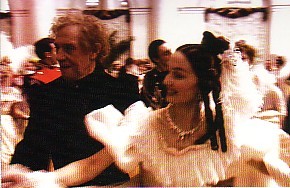
This final enigmatic image stands well for the film’s less than clear political stance. Many astute viewers have qualified their admiration for the film’s visual splendor with what they see as the film’s nostalgic (i.e. pro-czar) view of pre-revolution Russia. They point to this final image as a reflection of Sokurov’s romantic yearning for this ‘glorious’ past: Russia captured forever in its pre-revolution state. But the final image can also be read as a reflection of the aristocracy’s blindness to the force of history: a dying class naively trying to cling to the past, so far removed from its reality that it is, literally, “out to sea”.
There is little doubt that Sokurov is a conservative when it comes to his taste in art. His taste in literature and music does not go beyond the 19th century. As he has said in interviews, he listens to classical music and reads ‘thick’ books. The film leaves behind the politics of the aristocracy to concentrate on the surface beauty of military costumes, ball galas, ornate balustrades, and flowing dresses. But this does not necessarily mean that Sokurov advocates the politics of that era, or that he is unaware of the political links between art and patronage (government, aristocracy, the church, wealthy patrons, etc.). As Hoberman writes, “Taken by some as an exercise in czarist nostalgia, the movie is far more concerned with evoking Russia’s sense of national unreality.” 2 Part of Sokurov’s ‘unreality’ is the separation of 17th to 19th century Russian art from the vainglorious aristocracy that produced it. As one of the characters says while admiring the soldiers’ costumes, “Those uniforms are so beautiful, even if I don’t like the military.” For Sokurov the great Russian and European arts of the pre-Revolution era are the “beautiful uniforms” and the czarist regime the “military.’
If indeed one sees Sokurov’s vision as being nostalgic or pro-aristocratic, or perhaps merely aesthetically glorified, Sokurov is not alone in such stylistically ‘positive’ representations of the upper class (aristocracy, blue blood, bourgeois, etc.). Interesting parallels can be made to such films as The Magnificent Ambersons (Orson Welles, 1942), The Earrings of Madame de… (Max Ophuls, 1953), and The Rules of the Game (Jean Renoir, 1939), all of which depict the rich or ruling class with considerable sympathy and humanity. From a more purely aesthetic standpoint, one can also draw parallels to Last Year at Marienbad (Alain Resnais, 1962), with its ghostly ‘a-temporal’ figures and smooth dolly shots through the baroque chateau.
It is also ironic that Sokurov comes across as a cultural conservative on one hand, yet continues to make strikingly original and innovative cinema (the painterly qualities and minimalist soundscapes of Mother and Son, the stunning digital visuals of Moloch and Taurus, the unabashed lengths of Confessions (4 hours and twenty minutes) and Spiritual Voices (5 hours and 30 minutes), and the single take drama of Russian Ark. And while some critics equate Sokurov’s nostalgic view of the Russian aristocracy with an anti-Communist stance, the more accurate designation would be anti-Stalinist (a stance which Sokurov has every right to hold).
There are some reservations. Because of the single shot exercise Russian Ark lacks the inventive mise-en-scène of Sokurov’s earlier films, where he would often keep the camera still for minutes on end and sculpt out of light and texture. What is gained in terms of epic camera movement and spectacle is lost in terms of subtle mise en scène. I am thinking here of Sokurov’s extremely long takes where time becomes amorphous and allows for the heightened appreciation of minute changes in light, movement, color (like the incredible ‘static’ 40 or so minute opening of Spiritual Voices, and the long takes in the country house in Mother and Son). I was also disappointed at the lack of actual engagement with the art in the Hermitage, especially the paintings. When I first heard of this film I had imagined the camera creating a fascinating art historical montage by dollying from one canvas to another, exploring them in detail. But this does not happen, and it is largely, I would imagine, a limitation in the production logistics of the shot/shoot. Although Sokurov and Büttner had rehearsed the shot for two years, and met many times to map out the shot, they only had one day in the Hermitage to shoot the film, making lighting across the different halls and spaces a major difficulty. Hence much of the lighting was adjusted in post-production. Because of this it was very difficult to light for individual paintings and negotiating the glare and shadows which would normally appear in a museum setting. Not to mention the restrictions that the Heritage would no doubt have on exposing the paintings to direct artificial lighting.
Certain films unavoidably remain untouched in a festival report. And another set of eyes may naturally see and want to explore different threads, like, for example, the recurring theme of the dysfunctional family/relationship (always a favorite theme in the festival circuit), which was common among several otherwise uncommon films, The Sea (Baltasar Kormákur), Far From Heaven (Todd Haynes), Ken Park (Larry Clark, Ed Lachman), and Pleasant Days (Szép Napok). And two of my other favorite films of the festival, Jia Zhang-ke’s answer to Hou Hsiao-hsien’s youth anomie Millenium Mambo, Unknown Pleasures, and the mesmeric computer-video short hommage to the magical, timeless city of Venice, N[eon] (Dave Mckean). Perhaps in an alternate universe, another time, another place, adrift on a cinematic ark of other designs.
Notes
- As Jim Hoberman notes, Custine’s historical work of non-fiction which parallels Tocqueville’s Democracy in America is Letters from Russia. Film Comment. (Sept/Oct., vol. 36, no. 5): 54. ↩
- Ibid. ↩



